What Jacobs Got Right and Wrong
Using Jacobs' four criteria, the Upper West Side that she pilloried and saw little hope for can now, arguably, be considered successful.
Diversity of primary uses (condition #1) drives temporal and geographic dispersion of traffic, thus increasing security and a sense of vitality. While the UWS is dominated by residential usage (34% of lot area usage), there is a ample commercial activity (18% of lot area usage is commercial or mixed residential/commercial), significant public attractions (two large movie multiplexes, Lincoln Center, numerous museums, numerous bars) and ready access to two large recreation-friendly parks (NYCDCP 2009b). While the streets are noticeably more quiet during the very early morning hours, some pedestrian traffic can be observed on most streets 24 hours a day.
In terms of crime, the UWS (encompassed by the 20th and 24th precincts) in 2008 had around 10.7 crime incidents per 1,000 residents and 1.4 murders per 100,000 residents, well below the city average of 14.2 incidents / 1K and 6.3 murders / 100K. Crime in the neighborhood was a problem in Jacobs' time and through the 1990s, but numerous factors and initiatives (citywide and nationwide) reduced the per capita crime incident rate in 2008 to 19% of what it was in 1990 and the per capita murder rate to 14% (NYPD 2009).
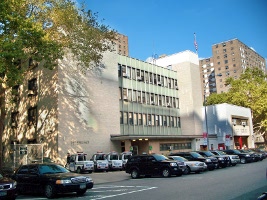
Population density (condition #4) is somewhat more difficult to evaluate since the ratios of living space to geographical area are dependent on building construction. Jacobs is careful to point out that density per square mile (which was often used in her time as a bias favoring suburban development) can be good while overcrowding in terms of persons per room is generally bad (Jacobs 1961, 268). By that criteria, the UWS excels, with only 5.6% of its housing units exceeding 1.0 occupant per room in the 2000 Census, compared to 10.5% for Manhattan and 14.6% for New York City as a whole (NYCDCP 2009b).
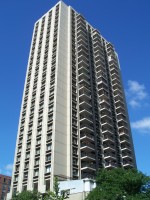
Given those observations, the UWS of 2009 can be said to meet Jacobs' first and fourth conditions. However, the second and third conditions are a bit more problematic.
Mixed ages of buildings (condition #3) has less to do with the aesthetic values or sentimental connections to structures than with providing a diversity of building conditions (and associated rental rates) that permit the presence of a diverse economic range of businesses. In the absence of rigorous statistical analysis of rental rates, building conditions and business types, it is difficult to provide quantitative evidence of a presence or absence of condition #3. However, casual observation over the past two decades indicates a gradual replacement of low income businesses (such as the Webers discount store on Broadway at 70th Street) with high income businesses (the bank that replaced the Webers), or subdivision of large storefronts into smaller ones (as with La Caridad Restaurant on 78th Street or the Hallmark greeting card store on Amsterdam at 73rd Street). Indeed, this process may be part of an economic "sorting" of the neighborhood that Jacobs predicts will ultimately undermine its diversity and contributes to its decline, especially if future economic troubles affect the city for an extended period of time (Jacobs 1961, 317-324).
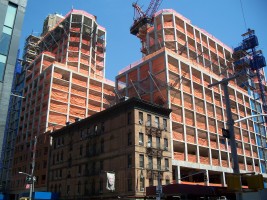
The need for short blocks (condition #2) is probably the condition most open to debate as to its necessity. Jacobs viewed vibrant sidewalk activity as a virtue in itself as well as a bulwark against crime and other social ills. However, it can be argued that the long blocks on the UWS provide isolation from vehicular traffic and social activity noise, contributing to an almost suburban sense of serenity on blocks that still remain within an urban context and permit ready access to the amenities of the city. Indeed, if the large public housing projects of the 50s and 60s can be considered "vertical slums", some of the denser, wealthier areas of the UWS might be considered "vertical suburbs," complete with the exclusivity and social isolation of their counterparts outside of the city.
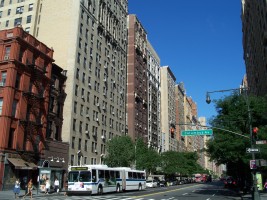
Although the benches on the Broadway Mall still remain vacant more often than not, to the south at Columbus Circle, the fountain was rebuilt in 2004 to surround the statue and a sitting area, creating a surprisingly popular contrast to the forbidding seating to the north. In 2009, Broadway in Times Square was completely closed to vehicular traffic, creating an sitting and pedestrian area while removing much of the chaotic traffic snarl that once characterized the confluence of Broadway and 7th avenue in an are of high pedestrian traffic.
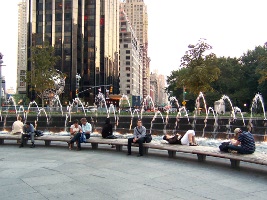
In the absence of the demographic and social conditions that made crime such a serious problem in Jacobs' day and with the presence of numerous doormen and service workers to serve as hired "eyes" for the community (Jacobs 1961, 51), the need for community bonding to address immediate block problems is less pressing than it might be in more troubled communities. Regardless, given the astronomical values of property in the neighborhood, it seems highly unlikely that breakup of long blocks could even be considered unless some major economic or physical catastrophe impacts the neighborhood at some future time.
Other Criteria of Success
In contrast to Jacobs' amorphous views of what constituted a successful city, the attractions of suburbia at the time were more concrete: "good schools, private space and personal safety" (Jackson 1985, 244) - things the New York City of 1960 was at a loss to provide even to its most affluent residents. In 2009, it can be argued that those criteria are met in the UWS - if you have the money to pay for them.
Personal safety has been addressed in the area's comparatively low crime rates. Private space needs can be said to be satisfied by the aforementioned low rates of overcrowding, although folks who covet private backyards and multiple activity rooms are likely to be disappointed on the UWS unless they are extremely wealthy. The UWS is home to a number of fine private schools and a handful of comparatively strong public schools, although competition for admissions and erratic quality make the task of educating a child much more difficult than it would be in many suburban areas.
Given the difficulty of defining success or failure within Jacobs' nonobjective criteria, it might be helpful to consider quantitative definitions of success.
If successful neighborhood is defined as one where people like to live, in a capitalist system success might be partially measurable in rent, property values and/or population growth. One of the dictionary definitions of success is, "The attainment of wealth, favor or eminence" (MWO 2009c). Failure is defined as, "Lack of success" or "Deterioration" (MWO 2009b), which itself is defined as, "Inferior in quality or value" (MWO 2009a).
In terms of rentals and housing value, the UWS ranks around average for Manhattan and well above average for the rest of the city. In the 2000 Census, the median monthly gross rent in Community District Seven (CD-7, which covers the UWS from 59th Street to 116th Street) was $972, which was well above the Manhattan median of $796 and the citywide median of $712 (NYCDCP 2009a). In market rate rents, the UWS as of May 2009 had doorman studio / 1-BR / 2-BR rates of $2,075 / $3,154 / $5,373, which were around average for the Manhattan core (Harlem and southward) of $2,332 / $3,299 / $5,112 (TREGNY 2009). Median housing value for owner-occupied units in the 2000 Census was $1,100,000, which was exactly the median for Manhattan and well above the citywide median of $211,862 (NYCDCP 2009a).
Given the high density, level of build-out and growing affluence on the UWS, the significant population growth that might be expected in a "successful" less-developed area should not be expected on the UWS and the 2000 Census population for CD-7 of 207,699 is fairly close to the 1980 population of 206,671 (NYDCP 2009b). The 2005-2007 American Community Survey estimate population of 215,834 does indicate some growth, and that number could reflect either the addition of a number of housing units in Lincoln Square and Riverside South, or simply a correction for undersampling in 2000. Curiously, the area has an unusually high percentage of women (54.7% female, 45.3% male), although the birth rate per 1,000 population of 13.7 is fairly close to the NY State average of 13.0 and the U.S. average of 14.2, which indicates level of reproductive vitality that could be expected from a healthy neighborhood (USCB 2009, HJKFF 2009).
Concluding Thoughts
For those people without Jacobs' specific tastes in civic life, the post-WWII decline of urban neighborhoods might be better viewed less as the micro level problems of neighborhoods than symptoms of larger social and economic factors that were unique to that period of time. The conditions she gives for building strong neighborhoods may be less causes than results.
While Jacobs abhorred the destructive, heavy-handed and racist urban renewal tactics of her day and prejudged them as failures, they ultimately accomplished what they were intended to do. Using a common adage from Christianity, the church is the people, not the building. The problems of the immediate post-WWII UWS were problems of "the least of these" and when those people were cast out of the garden and replaced with comparatively docile upper- and upper-middle-class residents, the problems of the poor abated in the way that Moses envisioned.
The crimes of the poor degrade their neighborhoods, but the crimes of the wealthy enrich their neighborhoods. Whether the placid, enriched Upper West Side has any "vitality" is a question of aesthetics and philosophy that the author will leave for the reader to decide.
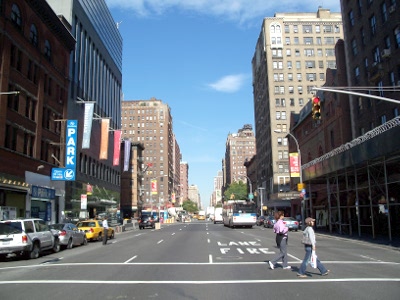
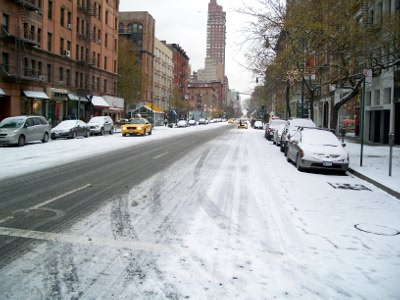
Acknowledgments
The first draft of this paper was initially written for the Political Economy of Cities course (URBG 787.18) in the Urban Affairs and Planning Department at Hunter College during the Summer of 2009. Special thanks to Prof. Brian Sahd for his insight and guidance.
Bibliography
Columbia University Graduate School of Architecture, Planning and Preservation Historic Preservation Program (GSAPP). 2007. Lincoln Square: Preserving the Modern Architecture of Slum Clearance, Urban Renewal and Their Architectural Aftermath. http://www.arch.columbia.edu/hp/studio/2006-2007/lincoln_square.html (last accessed 8 June 2009).
Gottlieb, Beatrice. 2008. The Historical Background of Morningside Gardens. New York: Morningside Heights Housing Corporation. http://www.mhhc.coop/about-history.htm
The Henry J. Kaiser Family Foundation (HJKFF). 2009. New York: Number of births per 1,000 population, 2006. http://www.statehealthfacts.org/profileind.jsp?ind=35&cat=2&rgn=34 (last accessed 10 June 2009).
Jacobs, Jane. 1961. The Death and Life of Great American Cities. New York: Random House, 1993 Modern Library Edition.
Merriam-Webster Online (MWO). 2009a. Deteriorated. http://www.merriam-webster.com/dictionary/deteriorated (last accessed 10 June 2009).
Merriam-Webster Online (MWO). 2009b. Failure. http://www.merriam-webster.com/dictionary/failure (last accessed 10 June 2009).
Merriam-Webster Online (MWO). 2009c. Success. http://www.merriam-webster.com/dictionary/success (last accessed 10 June 2009).
New York City Department of City Planning (NYCDCP). 2009a. New York City Census FactFinder: 2000 Census Profiles for New York City. http://gis.nyc.gov/dcp/pa/Map?mapaction=SINGLE&layer=nycd&stats=HousingCosts&sx=0 &sy=608&boro=1&dir=&event=NEW_STATS&entry=5
New York City Department of City Planning (NYCDCP). 2009b. Community Data Portal: Manhattan Community District 7. http://www.nyc.gov/html/dcp/html/neigh_info/mn07_info.shtml
New York Police Department (NYPD). 2009. Crime prevention | Crime statistics. http://www.nyc.gov/html/nypd/html/crime_prevention/crime_statistics.shtml (last accessed 10 June 2009).
Pileggi, Nicholas. 1969. Renaissance of the upper west side. New York Magazine, June 30. http://nymag.com/news/features/47182/ (last accessed 8 June 2009).
The Real Estate Group New York (TREGNY). 2009. Manhattan Rental Market Report. http://www.tregny.com/manhattan_rental_market_report (last accessed 10 June 2009)
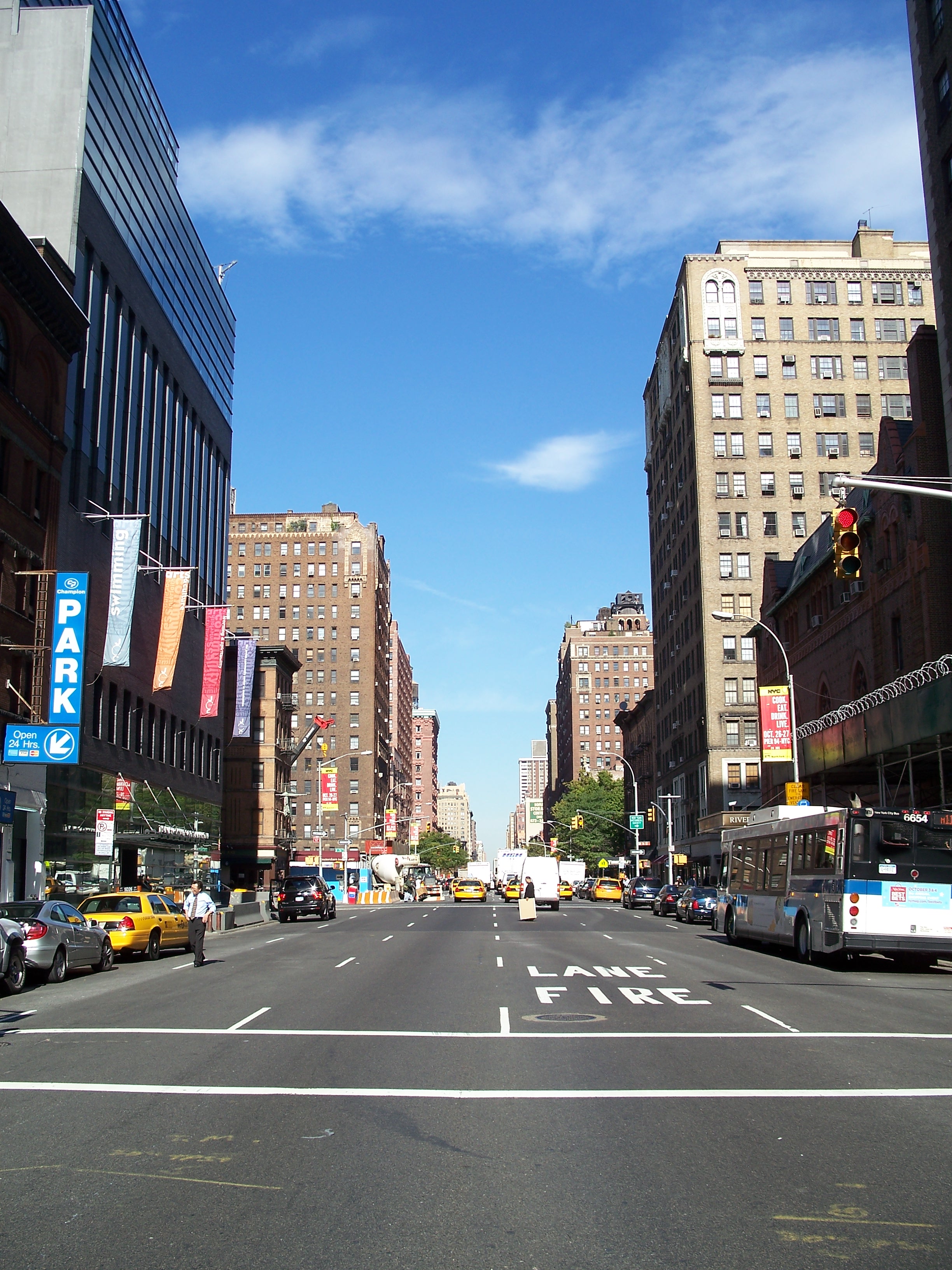
What Jacobs Got Right and Wrong
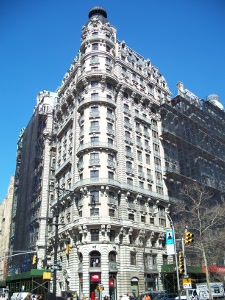
What Jacobs Got Right and Wrong
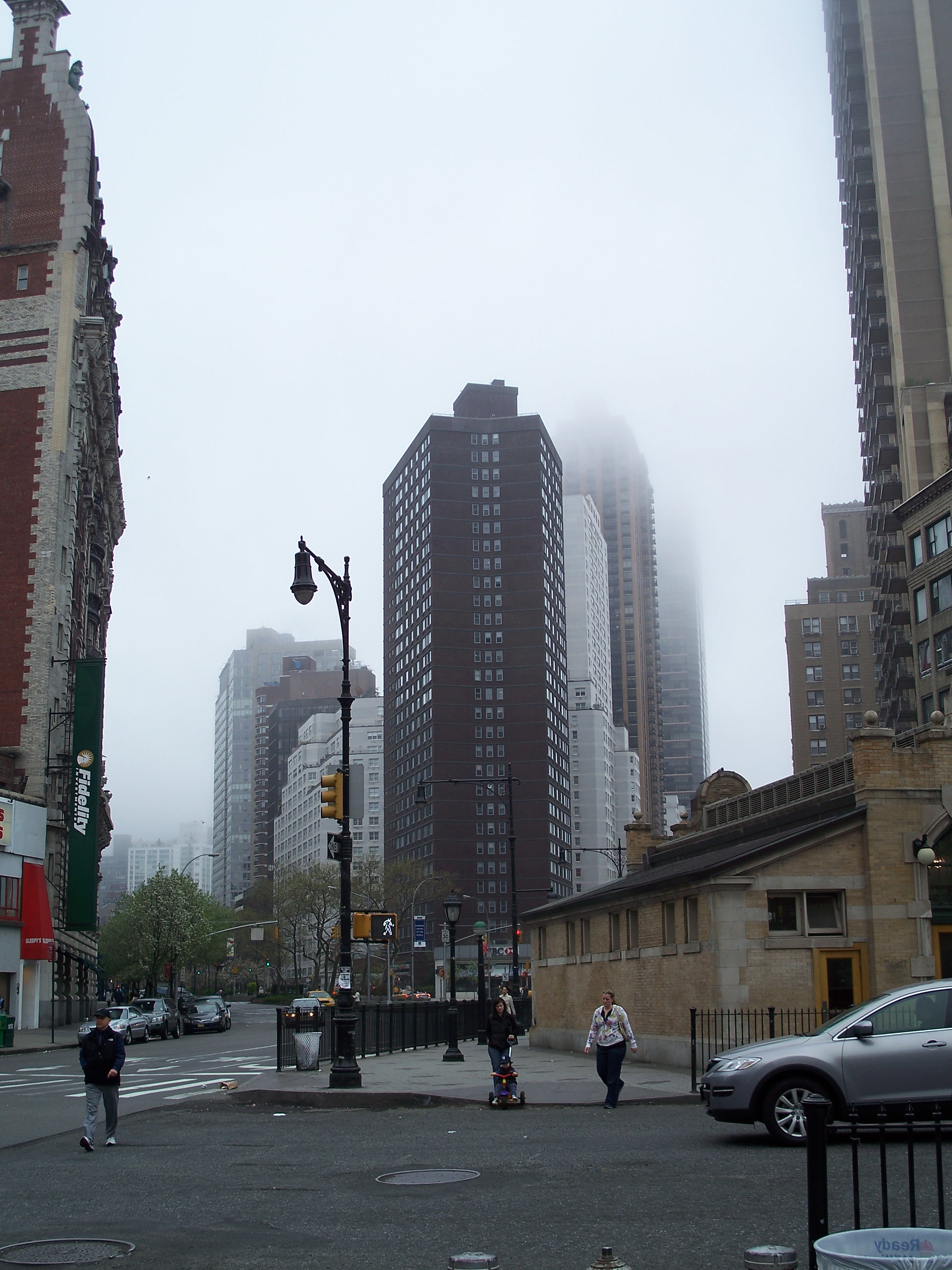
What Jacobs Got Right and Wrong
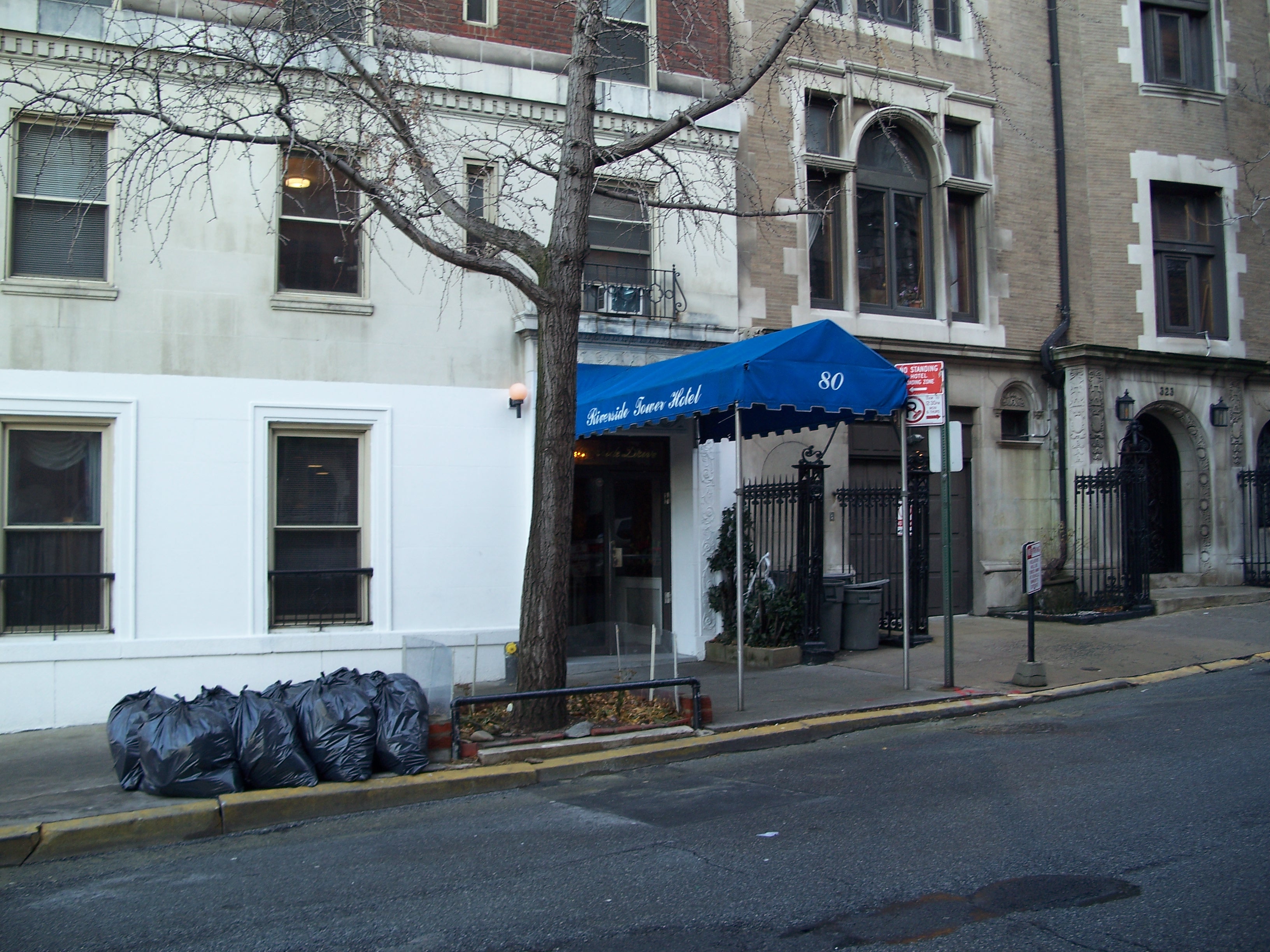
What Jacobs Got Right and Wrong
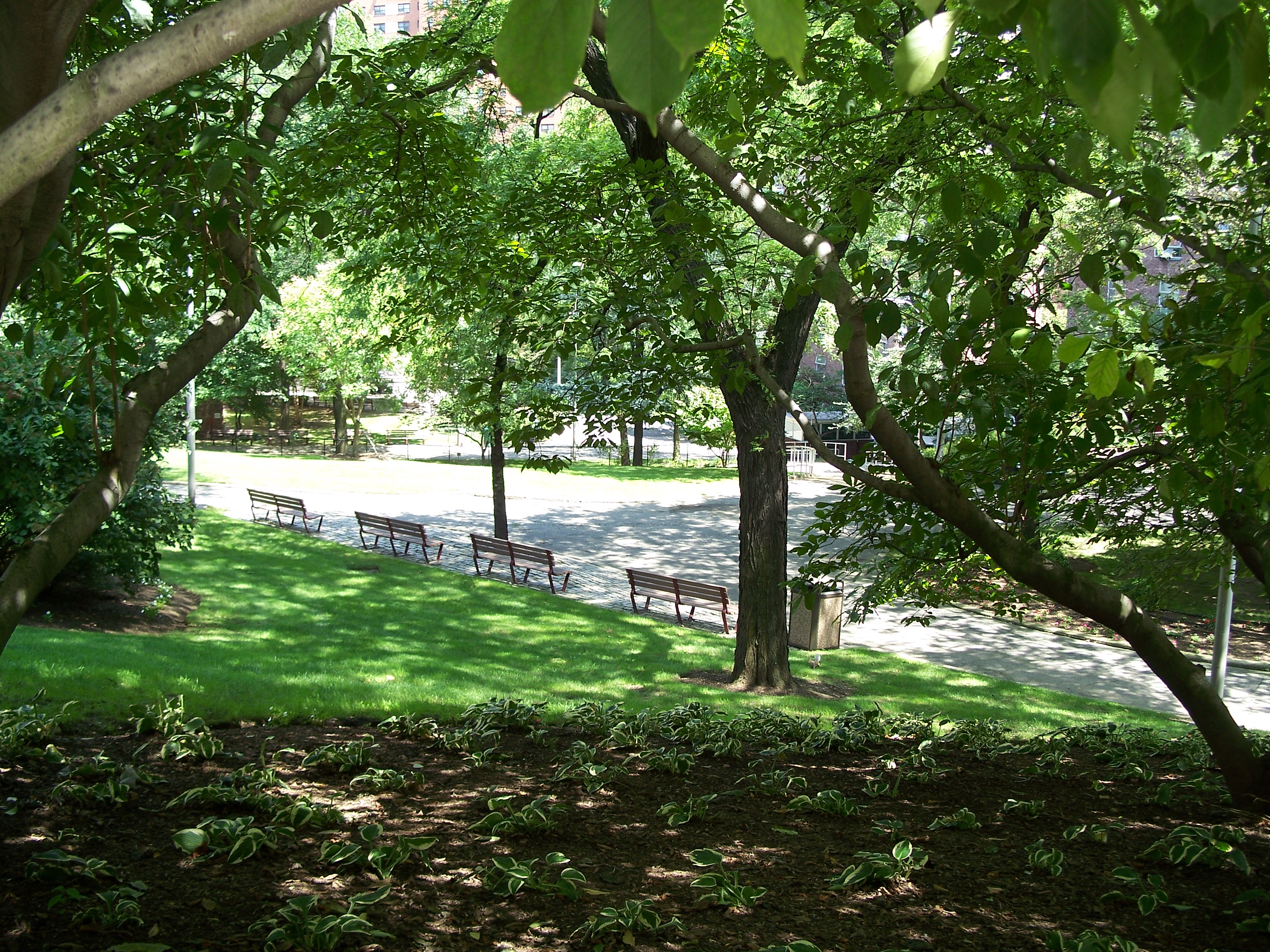
What Jacobs Got Right and Wrong
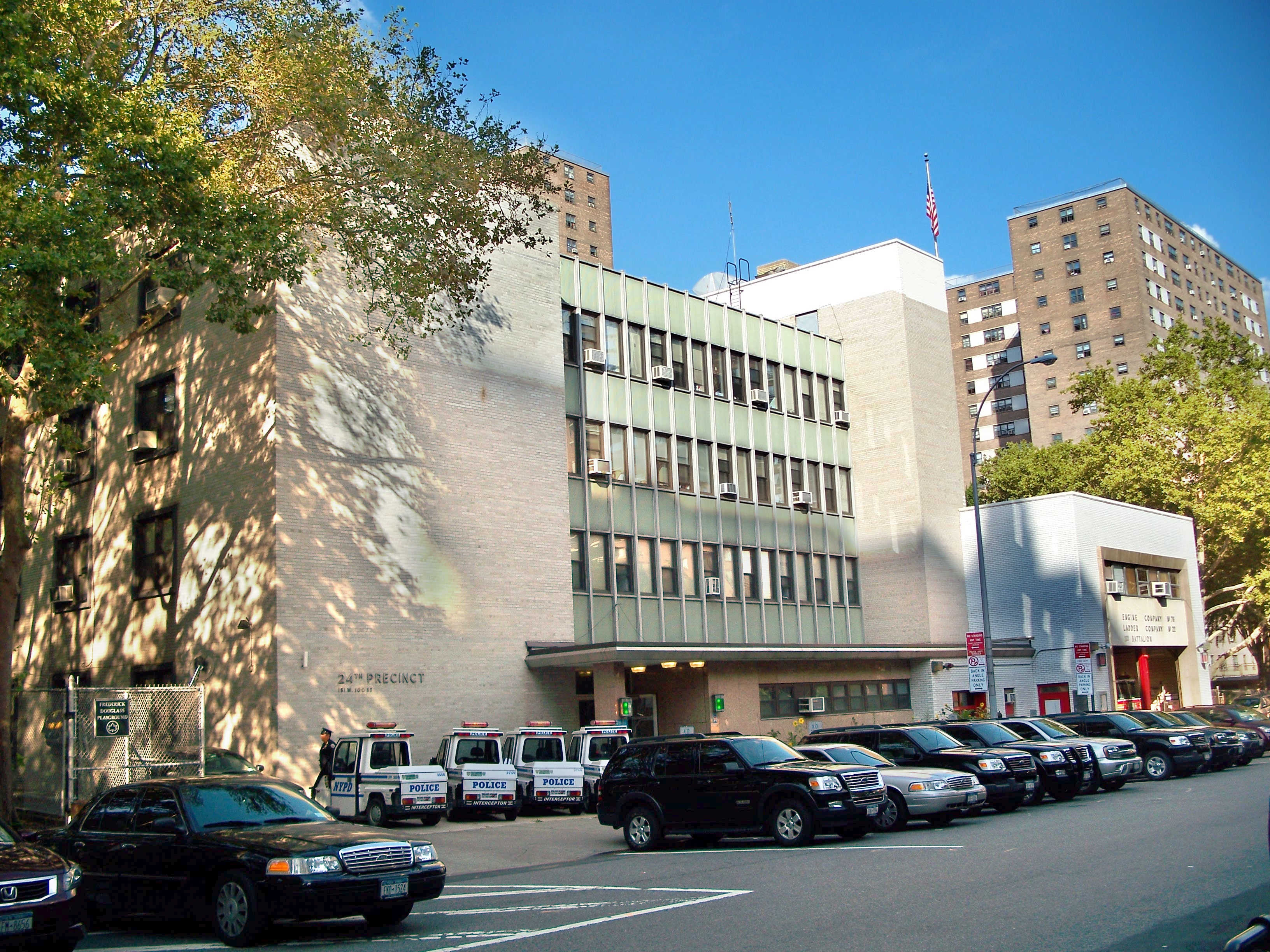
What Jacobs Got Right and Wrong